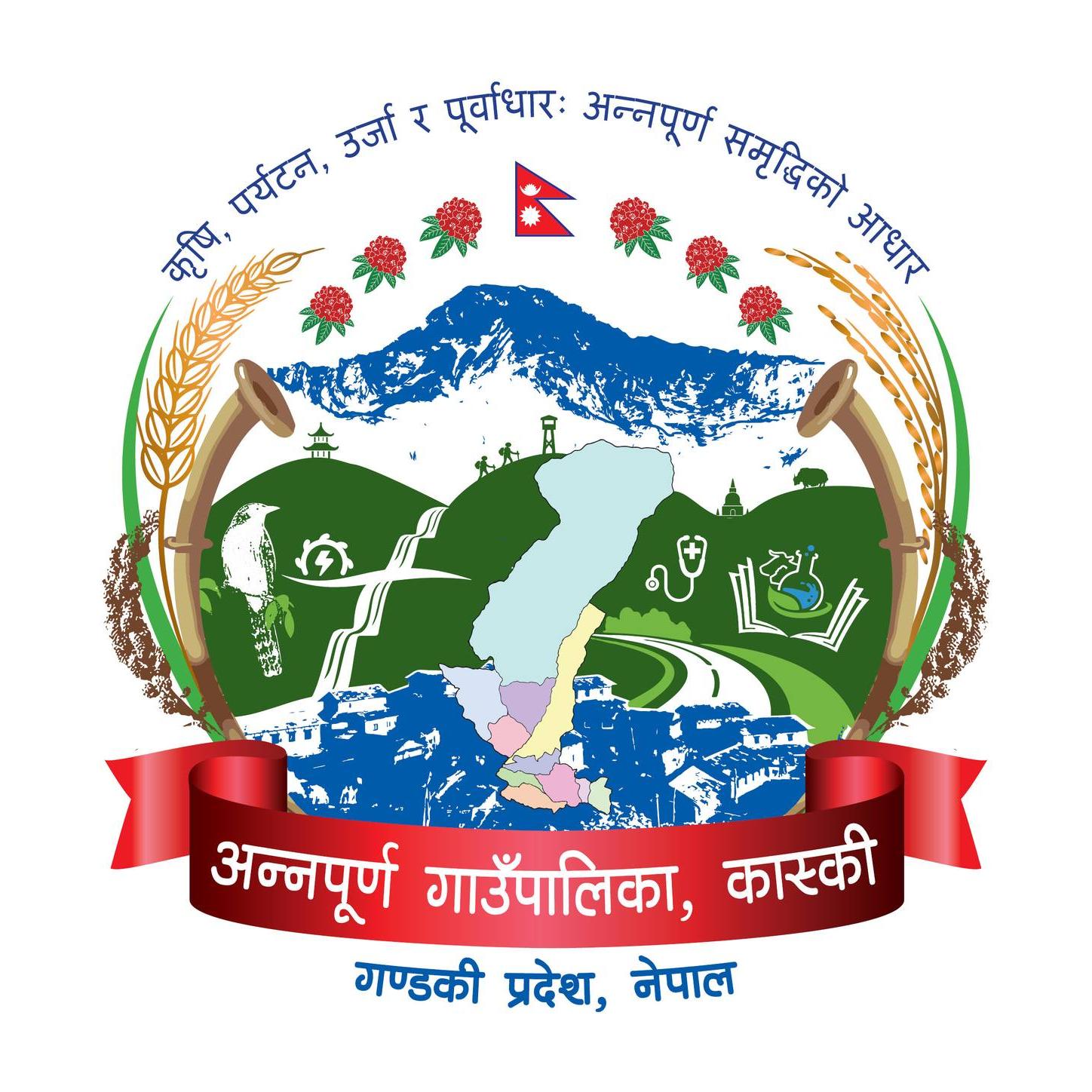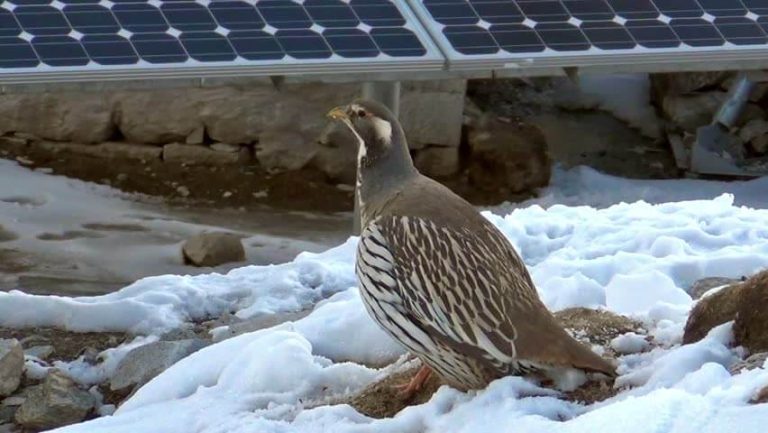1.Black Stork (Ciconia nigra)
Black Stork (Ciconia nigra) belongs to Ciconiiformes Order and Ciconiidae Family. Globally the species has been recorded from Nepal, Bhutan, China, India, Myanmar, Pakistan, Europe, Africa, Central Asia, Middle East, South-East Asia and East Asia. Black Stork is a widespread winter visitor in Nepal below 1000m and passage migrant to 2925m altitude. Since 1990 it has been recorded in Chitwan and Bardia National Parks and Sukla Phanta, Parsa and Koshi Tappu Wildlife Reserves. Outside the protected areas, it has been recorded from Dang Deukhuri Important Bird Area (2009), Pokhara and Begnas Tal of Kaski District (2007/2012), Gaidakot of Nawalparasi District (2012), Dharan forests Important Bird Area (1998), uncommon sightings at Dhorpatan Hunting Reserve at the altitude of 2925m in 1981 and 1998 and passage migrant in Makalu Barun National Park (1995-1996). The global population is estimated to number 24,000-44,000 individuals. The maximum estimated population of Black Stork in Nepal is 1000 individuals. It is listed as a least concern species in the IUCN Red List category. Nepal Bird Red Data Book categorizes it as a vulnerable species. The legal status of this species in Nepal is Protected (Appendix I) under the National Parks and Wildlife Conservation Act 1973 and Appendix II in CITES law.
2.Sarus Crane (Grus antigone)
Sarus Crane (Antigone antigone, synonym Grus antigone) belongs to Gruiformes Order and Gruidae Family. The bird is native to Nepal, Australia, Cambodia, China, India, Lao People’s Democratic Republic, Myanmar, Pakistan, and Viet Nam. It is an uncommon and local resident in the west-central terai of Nepal. The farmlands of Rupandehi and Kapilvastu Districts are the main known area where it breeds regularly. These farmlands are an important bird and biodiversity area of Nepal. Sarus Crane is also reported from Beldandi and Kalikich wetlands of Shuklaphanta Wildlife Reserve (2003), Badhaiya Tal of Bardia (2011), Nepalgunj in Banke district (2010, 2015), Dang district (2015), Jagdishpur Reservoir – a ramsar site (2006-2008) and Nawalparasi-Chitwan districts of Chitwan National Park and Bufferzone (2008-2011). The estimated population of Sarus Crane in Nepal is more than 700 individuals. It is listed as a vulnerable species in the IUCN Red List category. Nepal Bird Red Data Book also categorizes it as a vulnerable species. The legal status of this globally threatened species in Nepal is Protected (Appendix I) under the National Parks and Wildlife Conservation Act 1973 and Appendix II in CITES law.
3.Cheer Pheasant (Catreus wallichii)
Cheer Pheasant (Catreus wallichii synonym Catreus wallichi) belongs to Galliformes Order and Phasianidae Family. The bird is native to Nepal, India and Pakistan. It is a local resident in the western Nepal (1445-3050 m altitude); locally frequent in and around Dhorpatan Hunting Reserve and scarce elsewhere. Cheer Pheasant is reported from Dhorpatan Hunting Reserve, lower Kali Gandaki valley of Annapurna Conservation Area; Rara National Park; Kaphalpani , Dhaukudi, Kasanidada and Kulau VDC of Baitadi District; Tisimi dada and Kanachaur VDC of Doti District; Jumla Bazaar and Dhapa VDC of Jumla district; Dhanaikot VDC of Mugu district; Basti, Balata, Kuntibandali and Bhairabsthan VDC of Achham District; Dolpa district; Yalbang area in Humla district; and Kshetti area of Api Nampa Conservation Area. The global population is estimated to number 3000-4,000 individuals. The estimated maximum population of Cheer Pheasant in Nepal is 1000 individuals. It is listed as a vulnerable species in the IUCN Red List category. Nepal Bird Red Data Book categorizes it as an endangered species. The legal status of this globally threatened species in Nepal is Protected (Appendix I) under the National Parks and Wildlife Conservation Act 1973 and Appendix I in CITES law.
4.Himalayan Monal/Impeyan Pheasant (Lophophorus impejanus)
Himalayan Monal / Impeyan Pheasant (Lophophorus impejanus) belongs to Galliformes order and Phasianidae family. It is the national bird of Nepal. The species prefers alpine and sub-alpine areas in steep grassy and open rocky slopes and the adjacent forest during summer and descends to lower altitudes in rhododendron forest during winter, especially in times of heavy snow fall. The species is reported to be polygamous; males can be seen with more than one female. The bird is usually quite shy and flushes at a considerable distance. When flushed, the birds take to wing emitting a loud call sounding like pi-pi-pi. It digs for tubers with powerful bill, often remaining in one spot for half an hour or more. A dozen of cocks can be seen digging under the trees and open lands in the early morning. Terrestrial insects and tubers forms are the chief food. The bird is usually seen digging for tubers and roots, which seem to form their main diet in addition to grass roots and seeds, berries, mosses, insects and grubs. Eggs are laid in rudimentary nests on ground during May-June, generally under boulders and are 4-6 (sometime 2-3) in number. Incubation period is 28 days (but some time 26-29 days). The nest is a simple scrape, often under the shelter of a bush, a rock, or in the hole of some large tree. Himalayan Monal is native to Pakistan, India, Nepal, Bhutan, China and Myanmar. In Nepal it is fairly common widespread resident subject to vertical movements between from 3300-4750m in summer and down to 2500m in winter. This bird is reported from all Himalayan protected areas: Makalu Barun, Sagarmatha, Langtang, Shey Phoksundo, Khaptad and Rara National Parks; Dhorpatan Hunting Reserve; Kanchenjungha, Gaurishankar, Manaslu, Annapurna and Api Nampa Conservation Areas. The main threats to the species arise from hunting and trapping for local consumption especially during winter, when the bird descends to lower altitudes, closer to human habitations. Hunting and trapping by shepherds and poachers during and after monsoon cannot be ignored. It is also killed for its plumes. The world population is unknown but the Nepal population is estimated between 3500 and 5000 individuals. The bird is Least Concern (LC) according to IUCN Global Red list category but the regional IUCN status is Near Threatened (NT) for Nepal. The legal status of this species in Nepal is Protected (Appendix I) under the National Parks and Wildlife Conservation Act 1973 and Appendix I in CITES law.
5.Satyr Tragopan (Tragopan satyra)
Satyr Tragopan (Tragopan satyra) belongs to Galliformes order and Phasianidae family. It is resident in moist oak and rhododendron forest with dense undergrowth and bamboo clumps, mixed forest, scrub and densely vegetated ravines in gentle and steep slopes. It is solitary or in pairs. The birds feed on young leaves and other edible parts of plants like Berberis and Rhododendron. This is in addition to mosses, grasses and insects, lichens and quartz fragment. Individuals feed actively in the morning and late afternoon. The breeding season is believed to be in May-June and occasionally into July. Satyr is partly arboreal; nests have been found in trees and also on the ground. Clutch size is 2-3 eggs in the wild and 4-6 in captivity. Satyr Tragopan occurs in the Himalayas of Nepal, India, Bhutan and China. In Nepal it is scarce resident and reported from 2500-3800m in summer and down to 2100m in winter. This bird is reported from Khaptad, Shey Phoksundo, Langtang, Sagarmatha and Makalu Barun National Parks, Dhorpatan Hunting Reserve, and Api Nampa, Annapurna, Manaslu, Gaurishankar and Kanchenjungha Conservation Areas. Major threats for this bird include hunting for local consumption as well as habitat clearance and degradation due to timber harvesting, fuelwood and fodder collection and livestock grazing. Extraction of bamboo also poses problems for habitat of the species, given its association with bamboo undergrowth. The world population is below 20000 individuals and the Nepal population is estimated between 600 and 1000 individuals. The bird is Near Threatened (NT) according to IUCN Global Red list category but the regional IUCN status is Vulnerable (VU) for Nepal. The legal status of this species in Nepal is Protected (Appendix I) under the National Parks and Wildlife Conservation Act 1973. For Nepal, it is listed at Appendix III in CITES law.
6.Bengal Florican (Houbaropsis bengalensis)
Bengal Florican Houbaropsis bengalensis (Family Otididae, Order Gruiformes) is a highly threatened and rare ground nesting bird species inhabiting in Nepal, India, Cambodia and Vietnam with a world population of only 250-999. It has two sub species: Houbaropsis bengalensis bengalensis which exists in India and Nepal and Houbaropsis bengalensis blandini which subsists in Cambodia and Vietnam. In Nepal the population is estimated between 65 and 100 individuals. In Nepal, this bustard occurs in alluvial grasslands dominated by Imperata cylindrica in Chitwan National Park, Bardia National Park, Suklaphanta Wildlife Reserve, Koshi Tappu Wildlife Reserve and Koshi Barrage area. It is listed as a Critically Endangered species in the IUCN Red List category because of its small and rapidly declining population due to widespread loss of grassland habitat in its range. The legal status of this globally threatened species in Nepal is Protected (Appendix I) under the National Parks and Wildlife Conservation Act 1973 and Appendix I in CITES law.
7.Lesser Florican (Sypheotides indicus)
Lesser Florican belongs to Gruiformes Order and Otididae family. The bird is recorded from Nepal, India and Pakistaan. Lesser Florican is a very rare summer visitor in Nepal. Hodson had recorded it also in Kathmandu valley during 19th Century. Presently, there are very few sighting of the species only at Koshi Tappu Wildlife Reserve and Chitwan and Bardia National Parks. The estimated maximum population is 10 individuals in Nepal. It is listed as an endangered species in the IUCN Red List category. Nepal Bird Red Data Book categorizes it as a Critically Endangered species in Nepal. The legal status of this globally threatened species in Nepal is Protected (Appendix I) under the National Parks and Wildlife Conservation Act 1973 and Appendix II in CITES law.
8.Great Hornbill (Buceros bicornis)
Great Hornbill (Buceros bicornis homrai) belongs to Coraciiformes Order and Bucerotidae Family. The bird is native to Nepal, Bhutan, Cambodia, China, India, Indonesia, Lao People’s Democratic Republic, Malaysia, Myanmar, Thailand and Viet Nam. Great Hornbill is a rare and local resident bird in Nepal (100-500m altitude). Great Hornbill is recorded from Chitwan National Park (2009, 2010, 2012) and its Buffer zone: Barandbahar forests, Kumroj and Namuna Community Forests (2000, 2007, 2012); Bardia National Park (2006, 2009, 2012), Parsa Wildlife Reserve (2003), Ghodaghodi lake area (2009), Kapilvastu District forests (2009), Sarlahi District forests (2011), between Garuwa and Sukhani of Jhapa/Ilam Districts (1993), Ram Dhuni Sal forest of Sunsari District (1994) and Raja Rani Community Forest of Morang District (2004). The estimated population of Great Hornbill in Nepal is between 80 and 150 individuals. It is listed as a Near Threatened species in the IUCN Red List category. Nepal Bird Red Data Book categorizes it as an endangered species. The legal status of this globally near threatened species in Nepal is Protected (Appendix I) under the National Parks and Wildlife Conservation Act 1973 and Appendix I in CITES law.
Source- Birds | Department of National Park and Wildlife Conservation (dnpwc.gov.np)





Comments (0)
No comments found.